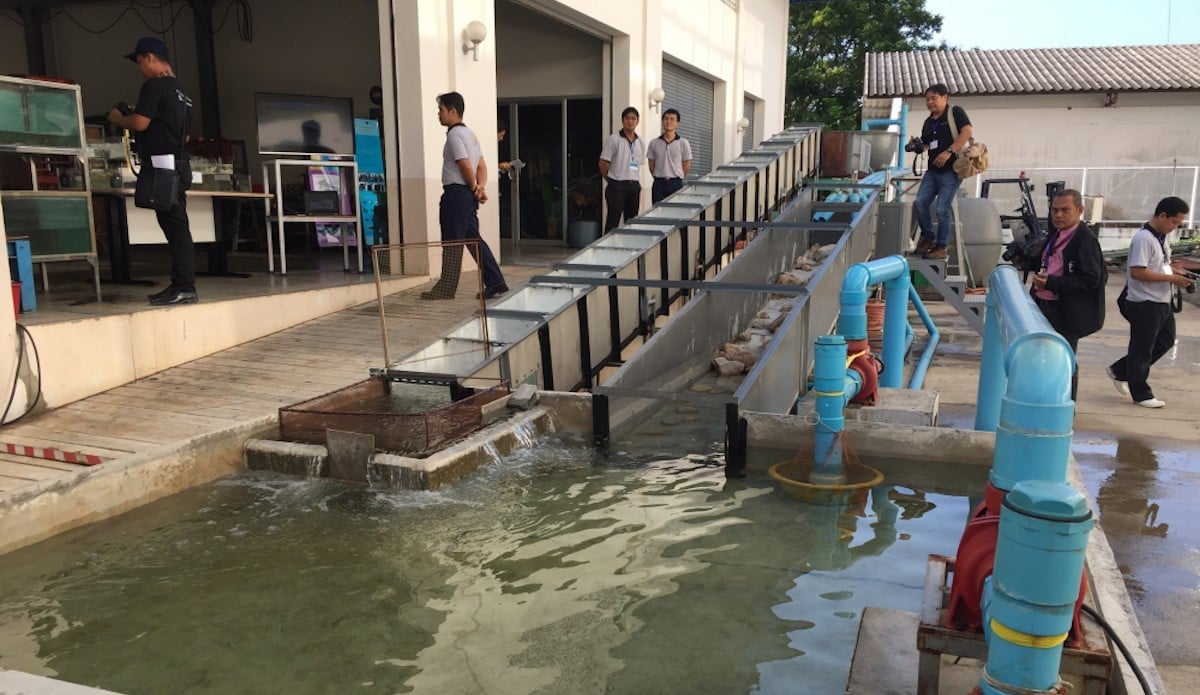RESEARCH TO develop a ladder to help native fish navigate upstream in rivers facing major hydropower project construction may be the best hope for preserving fish biodiversity, says an organisation dedicated to fisheries.But at least one leading academic is not convinced.
Khom Silpachan, secretary-general of the South East Asian Fisheries Development Centre (SEAFDEC), said fish ladders developed to suit Thailand’s native fish species could help them migrate as they swim up rivers to spawn. The ladder would help the fish swim around dams, he added.
Khom argued that a breakthrough in ladder research would ensure the survival of fish species in Thai rivers. And it could be adapted by other countries in the region, especially those bordering the Mekong River, where many dams are being constructed on its main tributary.
“Thailand and our Asean neighbours are a biodiversity hotspot for freshwater fish, but right now they are facing a threat to their survival. Recently, there have been many irrigation and hydropower projects in the region. The structures obstruct the migration passage of fish up and down the rivers,” he said. Many more irrigation and hydropower projects are being planned.
“Many kinds of fish have to migrate upriver to reproduce. Cutting up their migration route often results in a great decline in the number of fish or even extinction of the species.
“Therefore, the fish ladder is a very essential innovation to help the fish migration and ensure the survival of their species.”
Suthipong Thanasarnsakhon, the head of fisheries engineering for SEAFDEC, said the fish ladder research began in May 2015 in search of a solution specific to the needs of Thailand’s fish and water conditions. A fish ladder at Pak Mon Dam had been found impractical and taught researchers that a design used in the West was unsuitable here.
“Our design of fish ladder has vertical slots that the fish can swim through, unlike the fish ladders in the Western countries designed for salmon to jump up the horizontal rungs of the ladder,” Suthipong said.
“Right now our design has an 11-degree slope. We experimented on 10 species of endemic Thai fish. We found that five species of fish can successfully climb the ladder and all of them are scaly fish.”
There is more research to be done, and the fish ladder design would have to be improved to allow more species of fish to use it, he said. A field experiment at Nong Han Lake in Sakhon Nakhon will soon be scheduled.
Khom added that the right design could save many fish. The technology could be shared among other Asean countries, which share a marked decline in fish numbers due to rive damming. “Right now there are more than 800 species of fish in Mekong River and 100 of them are migratory fish,” he said.
However, prominent freshwater fish expert Nonn Panitwong argued that fish ladders were the wrong answer for saving regional biodiversity and could not sufficiently mitigate the impacts from dams.
“The fish ladder is originally designed for specific species of fish to pass the dam, for instance salmon, and not every type of fish in the river can use the ladder,” Nonn said.
“The success of a fish ladder in other countries cannot be replicated here, because our tropical region has far more diverse species of fish than the colder regions.”
He noted that even though SEAFDEC had confirmed that scaly fish could climb the ladder, more than one-quarter of other fish species could not pass and so large numbers of fish species would be lost.
He also said that installing fish ladders was a complicated matter. Finding a good location is a challenge, and developing a technique to attract the fish in order to climb the ladder is a complex issue.
Instead of using fish ladders, officials should implement more practical solutions such as opening water gates at specific periods of time to allow migrating fish through, he said.
“However, I think that the best solution is to refrain from constructing the harmful projects in the first place, or we are sacrificing the food security and rich biodiversity of the region to projects that benefit only a few.”





